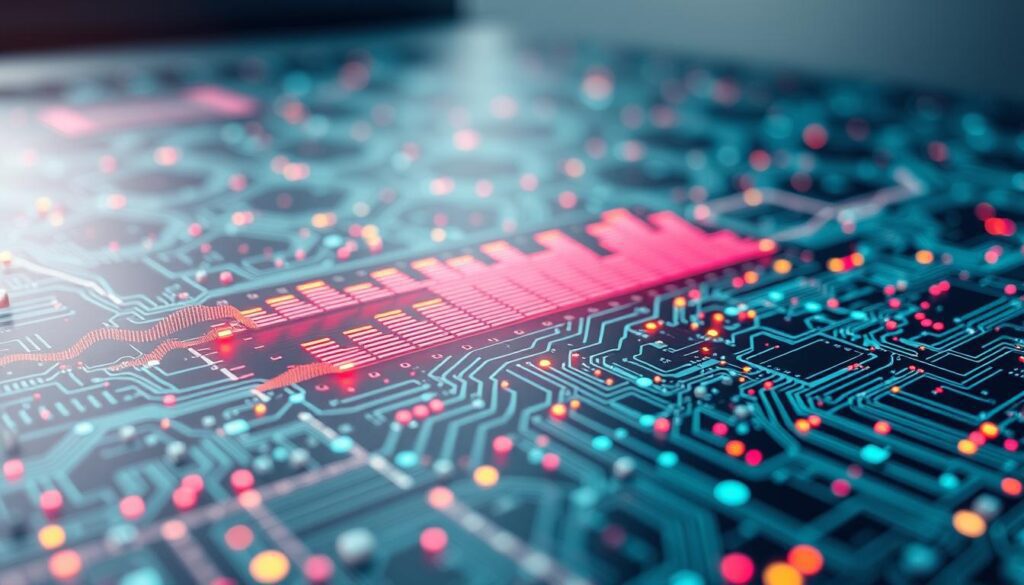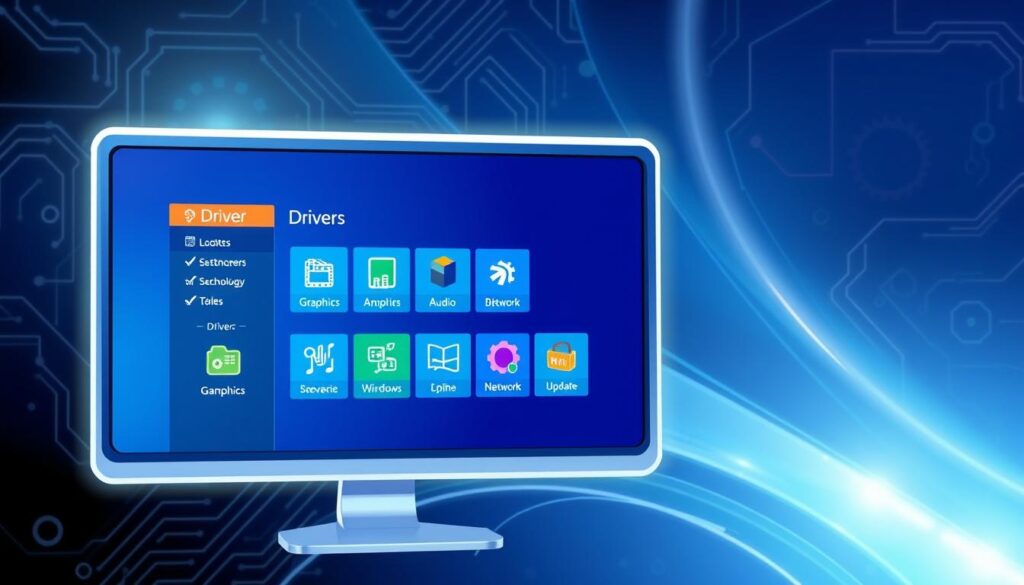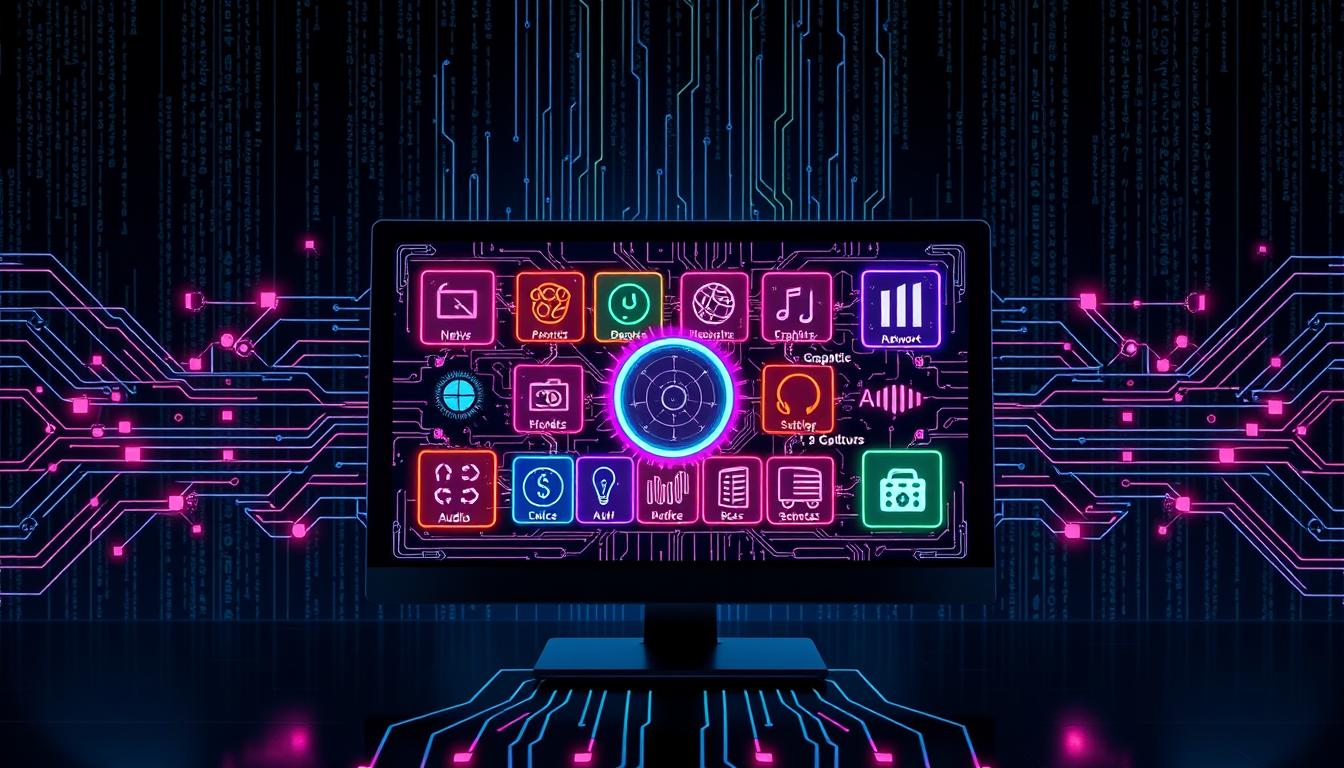4 Drivers you should make sure to keep up to date on Windows. Keeping your drivers updated is key for a smooth Windows experience. It affects your system’s performance, security, and how well it works. There are four main drivers you should always keep current.
This article will cover why these drivers are so important. Let’s talk about their impact on your system and give advice on how to maintain them up to date. You are able to optimize the execution of your hardware and get better Windows by gaining knowledge about device drivers and how to make them more current.
Important Takeaways
- Updating device drivers is essential for maximizing Windows stability, security, and performance.
- It is essential to keep an eye on the following four drivers: system-critical, network, graphics, and audio.
- Regularly checking and updating these drivers can significantly improve your overall computing experience.
- Proper driver management can help you avoid common issues like system crashes, lagging, and compatibility problems.
- Employing best practices for driver updates, including backup and troubleshooting, can ensure a seamless update process.
Understanding the Importance of Updated Device Drivers
The optimal performance and stability of your Windows system depend on having your device drivers updated. New drivers can greatly improve your system performance, hardware compatibility, and security. Let’s explore why keeping your drivers current is so important.
Impact on System Performance and Stability
Old or wrong drivers can lead to many problems. These include slow systems, crashes, and even hardware failures. Updating your drivers regularly makes sure your hardware works well. This boosts your Windows PC’s performance and reliability.
Security Benefits of Current Drivers
Driver updates fix important security holes that could harm your system. Keeping your drivers current protects your device from new threats. It also makes sure your Windows updates work right.
Common Driver-Related Issues
- Compatibility problems with new software or hardware
- Reduced system speed and responsiveness
- Frequent system crashes or blue screen errors
- Malfunctioning device features or peripherals
- Cybercriminals could take advantage of security flaws
One easy method to maintain the stability and security of your Windows PC is to keep your driver software updated. You can ensure your computer is operating at peak performance by knowing the importance of updated drivers. You’ll also safeguard your online environment.
Graphics Card Drivers: Your Visual Performance Gateway
Your graphics card drivers are key to unlocking your Windows machine’s full potential. They connect your computer’s hardware to the visual display. This ensures smooth, high-quality graphics in many applications.
The performance of your system is significantly enhanced by keeping your graphics drivers updated. This is particularly true for 3D rendering, video editing, and gaming. Current drivers optimize communication between your graphics card and the operating system. This leads to better performance in several areas.
- Frame rates and responsiveness during gaming sessions
- Seamless playback and rendering of high-resolution multimedia content
- Compatibility with the latest hardware and software advancements
Updating your graphics drivers also boosts system stability and security. Old drivers can leave your system open to cyber threats. Keeping your drivers current protects your data and privacy, making your computing experience more reliable.
| Feature | Improved with Updated Graphics Drivers |
|---|---|
| Gaming Performance | Higher frame rates, smoother gameplay |
| Multimedia Playback | Enhanced video quality, reduced stuttering |
| Hardware Compatibility | Compatibility with new hardware and software |
| System Stability | Fewer crashes, freezes, and other issues |
| Security | Patched vulnerabilities and improved protection |
By keeping your graphics card drivers updated, you unlock your Windows system’s full potential. Enjoy an immersive, reliable, and secure visual computing experience.
Network Adapter Drivers: Maintaining Stable Internet Connection
A trustworthy link to the internet is necessary for work, play, and Interaction in today’s surroundings. In the center of this are network adapter drivers, which assure smooth data transfer between your device and the internet. It’s vital to keep these drivers current to boost your internet speed and security.
Wireless Connectivity Optimization
Old network drivers can cause Wi-Fi to drop, slow down, or even disappear. You can work out these problems through updating your driver software. It rises the power of your Wi-Fi signal, minimizes interference, and improves the consistency of your connection.
Ethernet Performance Enhancement
If you use a wired connection, Windows updates to your Ethernet drivers can make a big difference. Newer drivers often fix bugs, improve performance, and support the latest Ethernet tech. This ensures your wired connection is as fast and reliable as possible.
Network Security Updates
- Network adapter drivers are key to keeping your Windows system safe.
- Driver updates often include fixes for security holes, protecting your device from hackers.
- Keeping your network drivers current is a must for safe online activities and data protection.
By keeping your network driver updates current, you get a fast, reliable, and secure internet connection. This lets you work, stream, and browse with confidence.
Audio Device Drivers: Ensuring Crystal Clear Sound
In computing, good audio quality is key to a great experience. Audio device drivers are crucial for this. Keeping them updated ensures clear sound, fixes issues, and boosts your Windows computer’s audio.
Having the latest audio drivers greatly improves your system’s hardware compatibility and system performance. Old or wrong drivers can cause bad sound, choppy playback, or even no sound at all. With updated drivers, your sound hardware works best, giving you a top-notch audio experience.
Unlocking Audio Excellence
Updating your audio device drivers brings many benefits:
- Enhanced sound quality: New drivers improve audio processing and support for codecs, making sound richer and more dynamic.
- Improved compatibility: Updated drivers ensure your audio hardware works well with new software and OS versions, avoiding problems.
- Decreased audio latency: Proper drivers reduce latency, which improves audio responsiveness and efficiency, particularly in games or music.
You may get better and more consistent sound by maintaining your audio drivers up to date. For watching films, listening to music, and doing multimedia tasks, this is great.
| Advantage | An explanation |
|---|---|
| Improved Audio Quality | Richer, more dynamic sound is produced by newer audio drivers, which frequently incorporate enhancements in codec compatibility and audio processing. |
| Enhanced Compatibility | By keeping your drivers up to date, you can avoid compatibility problems and make sure your audio hardware functions flawlessly with the newest operating systems and software. |
| Decreased Latency in Audio | A more responsive and effective audio experience can be achieved with properly configured audio drivers, which reduce input-output latency, especially for workloads like gaming or music production. |
By focusing on your audio device drivers, you can make your computing experience better. Enjoy a fully immersive audio environment on your Windows system.

4 Drivers You Should Make Sure To Keep Up To Date On Windows
Keeping your device drivers updated is key for your Windows devices to run smoothly. There are many driver types, but four are especially important. Let’s look at these critical drivers and why it’s important to keep them current.
Critical Driver Categories
The four most vital driver categories for Windows users are:
- Graphics Card Drivers
- Network Adapter Drivers
- Audio Device Drivers
- System Drivers (such as motherboard, chipset, and storage controllers)
Update Frequency Guidelines
The update frequency for these drivers depends on several factors. Here’s a general guide:
- Graphics card drivers should be updated every three months or when a new game or app needs the latest version.
- Network adapter drivers should be updated when there’s a new network feature or security patch.
- Audio device drivers should be updated if you have audio issues or install new audio software.
- System drivers should be updated when you add new hardware or a Windows update requires it.
Performance Impact Analysis
Updating these drivers can greatly improve your system’s performance. Old drivers can cause problems like compatibility issues and security risks. By using the latest drivers, you’ll see better system performance, device compatibility, and security on your Windows devices.
| Category of Drivers | Effect on Performance | Impact on Security | Impact of Compatibility |
|---|---|---|---|
| Graphics Card | enhanced gaming experience, frame rates, and graphic quality | enhances driver security and addresses security flaws | Improved compatibility with the newest apps and games |
| Network Adapter | More reliable and quick internet access | discusses the risks and weaknesses associated with network security. | makes certain that it is compatible with the most recent network protocols and technologies. |
| Audio Device | Enhanced audio performance and quality | fixes security vulnerabilities relating to audio | improves compatibility with the newest hardware and audio software. |
| System Drivers | enhanced overall system performance and stability | resolves security flaws in essential system elements | keeps up with the most recent hardware and Windows updates. |
“Maintaining the best possible performance and security for your Windows-powered devices requires that you keep your device drivers updated.”
How to Check Your Current Driver Versions
Keeping your device drivers updated is key for your Windows system’s performance and stability. But, how do you find out which drivers you have? We’ll show you how to check your driver versions using Windows tools and third-party options.
Windows Device Manager
The fastest way to see your driver versions on Windows is through the Device Manager tool. To access it, follow these steps:
- The “Device Manager” One can choose an option by selecting Windows Start with a right-click.
- Increase the size of each device category in the Device Manager window that displays the installed drivers.
- Look at the version numbers for drivers like your graphics card, network adapter, and audio devices.
Third-Party Driver Utility Tools
While the Device Manager gives a good overview, driver utility tools offer more details. These tools scan your system and suggest Windows updates and driver upgrades for better hardware compatibility.
| Tool | Key Features | Pricing |
|---|---|---|
| Driver Easy | Automatic driver scanning, one-click updates, backup and recovery options | Free and paid plans available |
| Driver Booster | Comprehensive driver database, game-specific driver optimization, automatic updates | Free and paid plans available |
| Crucial System Scanner | Detailed hardware analysis, compatibility recommendations, driver update suggestions | Free |
By mixing the Device Manager with third-party tools, you can find your current device drivers easily. This ensures they’re updated for the best system performance and hardware compatibility.
Best Practices for Driver Updates in Windows
Keeping your Windows drivers up-to-date is key for top system performance and stability. The update process can be complex, with both manual and automatic methods. We’ll look at the best ways to update drivers in Windows, including manual and automatic methods, and why backing up is important.
Manual Update Methods
Manual updates let you take control. You locate the appropriate driver on the manufacturer’s website and download the most recent version. Although it takes time, it guarantees that you will receive the appropriate driver for your machine.
Automatic Update Tools
Automatic tools make updates easier. They include Windows Update and third-party software that find and update drivers for you. This saves time but make sure the tool is reliable and fits your system.
Backup Procedures
Always back up your system before updating drivers. This way, you can go back to a stable state if updates cause problems. It’s wise to create restoration points and backup your data.
You may maintain the smooth operation of your Windows system by adhering to these suggestions. Keeping one’s health and ability to function of your system needs a proactive method for updating drivers.
Troubleshooting Common Driver Update Issues
Updating device drivers can sometimes be tricky. But knowing common problems and their solutions can make it smoother. Let’s look at some common driver update issues and how to fix them.
Driver Compatibility Conflicts
One big challenge is when new drivers don’t work well with your system hardware. This can cause problems like slow performance or even device failure. This is how to deal with it:
- Verify that the updated drivers work with your system and device.
- Use drivers from the manufacturer, as they are often better for your hardware.
- If an update causes trouble, go back to the previous driver right away.
System Performance Slowdowns
Driver updates can sometimes slow down your system. This might make things load slower or feel less responsive. Here’s what to do:
- Check if the new driver works with your hardware.
- Make sure your system can handle the new driver.
- If things get slow again, try going back to the old driver.
Corrupted or Missing Drivers
Sometimes, driver updates don’t work and leave your system in a mess. This may result in crashes, problems, or even blue screens. Here’s how to improve it:
- Try setting up the driver manually from the website of the maker.
- To find and fix any missing or not working drivers, use a reliable driver program for management.
- You could require to reinstall your operating system if nothing fixes the problem.
You can maintain the smooth operation of your Windows PC by addressing these typical driver update issues. You will have a better experience as a result.
Third-Party Driver Update Tools vs Windows Update
Keeping your Windows drivers up-to-date has two main options. Third-party tools or Windows Update are options. Based on your requirements, each has benefits and drawbacks.
Comparison of Benefits and Drawbacks
Windows Update is easy to use and safe. It updates your drivers automatically. But, it might not always have the latest drivers, especially for special hardware.
Third-party tools scan your system deeply. They find outdated drivers and offer the latest ones. This can boost your system’s performance. But, you have to install the updates yourself, and there’s a risk of picking the wrong driver.
Recommended Tools
For third-party tools, consider Driver Booster, Driver Easy, or Snappy Driver Installer. They have big driver databases and are easy to use. But, compare different tools to find the best one for you.
Selecting between Windows Update and reliance on third-party tools on you. To locate the one that works ideal for your system, you might have to give a few a try.

Driver Update Safety and Best Practices
Updating your device drivers is essential for the security and functionality of your Windows system. However, if done incorrectly, updating drivers might be dangerous. Here are some tips for a safe and smooth driver update experience.
Compatibility Checks
Always check if the new driver fits your system’s hardware and software before updating. The wrong driver can cause crashes or damage your hardware. To locate the appropriate driver for your device and Windows version, be sure to consult the manufacturer’s website or documentation.
Make a backup and restore
Back up your current drivers before updating. This way, you can go back to the old drivers if the new ones cause trouble. Also, learn how to manually restore drivers in case of a failed update.
Gradual Updates
Update your drivers one at a time instead of all at once. Test your system’s stability and performance after each update. This helps you spot and fix any problems more easily.
Trusted Sources
Get your device drivers from the manufacturer’s official website or Windows Update. Stay away from third-party tools or unverified sources. They might have malware or incompatible software that can harm your system.
Scheduled Maintenance
Make a regular plan for updating your drivers. This keeps your device drivers, Windows updates, and hardware compatibility current. Use reminders or automatic tools to make the process easier and keep up with important updates.
By sticking to these best practices, you can update your drivers safely and efficiently. This ensures your Windows system stays optimized, secure, and runs smoothly.
Final Thoughts
4 Drivers you should make sure to keep up to date on Windows. We’ve talked about why keeping four key drivers – graphics, network, audio, and system – updated is crucial. These updates boost your system’s performance and stability. They also help keep your computer safe and fix common problems.
By following our guide, you can improve your Windows device’s performance. This includes manually or automatically updating drivers and backing up your system. You can choose the best tool for you if you understand the differences between Windows Update and third-party programs.
The health of your Windows system depends on keeping your drivers up to date. The four drivers we mentioned are essential for your device’s full potential. Stay informed and updated for a smooth computing experience.
FAQ
What are the 4 essential drivers I should keep up-to-date on my Windows system?
You should update four key drivers on your Windows system. These incorporate drivers for fringe gadgets, network connectors, designs cards, and sound gear.
What is updating my device drivers crucial?
Updating your device drivers is key for a smooth system. It keeps your system running well, fast, and safe. It also makes sure your hardware works right with your system.
How oftentimes should my designs card drivers be refreshed?
You ought to routinely refresh your illustrations card drivers assuming you like to mess around or use programs that request a great deal of handling power. Updates can fix issues, improve execution, and backing new games.
What are the advantages of maintaining the most recent drivers for my network adapter?
Keeping your network adapter drivers current helps your internet work better. It makes downloads and uploads faster and keeps your system safe from online threats.
How do updated audio drivers improve my sound experience?
Updated audio drivers make your sound better. They fix problems and improve the realism of your audio, whether you’re viewing movies, listening to music, or using speech apps.
How can I see which Windows device drivers are up to date?
You can see your driver versions using Windows Device Manager or a third-party tool. These tools find outdated drivers for you to update.
What are the best practices for updating drivers on my Windows system?
To update drivers well, check for updates manually, use Windows Update, and use trusted third-party tools. Always back up your system before updating drivers to avoid losing important data.
How can I troubleshoot common issues that arise during the driver update process?
If driver updates cause problems, try fixing them. You can roll back the driver, uninstall and reinstall it, or check for software conflicts.






